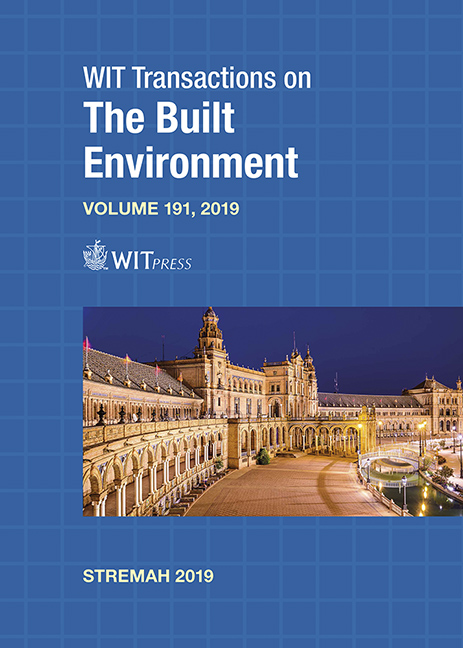MECHANICAL PROPERTIES OF ROCK UNITS FROM THE POMPEII ARCHAEOLOGICAL SITE, ITALY
Price
Free (open access)
Transaction
Volume
191
Pages
10
Page Range
341 - 350
Published
2019
Paper DOI
10.2495/STR190291
Copyright
WIT Press
Author(s)
FRANCESCA AUTIERO, GIUSEPPINA DE MARTINO, MARCO DI LUDOVICO, ANDREA PROTA
Abstract
The definition of compatible conservation interventions on the archaeological built asset requires a comprehensive knowledge of physical, chemical and mechanical properties of the ancient masonry structures and their components. However, information on the mechanical properties of units, mortars and masonry assemblages are still lacking especially with reference to one of the most popular UNESCO World Heritage Sites in Italy, the Pompeii archaeological site. Thus, the paper focuses on the mechanical characterization of original rock specimens collected within the new archaeological excavation work area in Regio V of the Pompeii site. Ultrasonic pulse velocity tests (UPV) and Schmidt hammer rebound test were carried out on ten units of three different rock types: three travertine, five lava and two foam lava (i.e. “calcare del Sarno”, “lava” and “cruma”). Then, UPV were carried out on 51 cubic specimens obtained from the cut of the units, both at ordinary moisture content and after drying. Finally, uniaxial compression tests were carried out on 32 cubic specimens. In the following, the results of non-destructive tests are discussed and compared with those provided by destructive tests in terms of compressive strength.
Keywords
rock units, masonry structures, Pompeii archaeological site, mechanical properties, nondestructive tests, destructive tests




